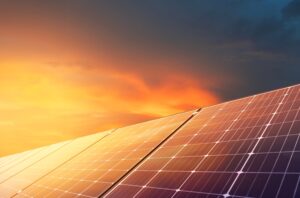03/06/2020
I try to avoid hyperbole, but last Saturday I sat down to watch history being made.
At 1522 EDT on 30 May 2020, Doug Hurley and Bob Behnken in their Dragon capsule blasted off from Cape Canaveral and into low Earth orbit, propelled by the mighty Falcon-9 rocket. This was the first time a private company had sent astronauts to the International Space Station, and the first time since the end of the Space Shuttle program in 2011 that anyone had travelled into space from US soil.
The launch was captivating. I sat there in almost childlike wonderment watching the various stages of the rocket burn-out and detach. I was equally mesmerised watching the beautiful curved profile of the Earth come into view as the speedometer ticked over a mindboggling 27,000 km/h. At the same time, as a patent attorney, I wanted to know what technological leaps forward were necessary to get to this point, and what patents could I find?
SpaceX Citations
The Dragon capsule, the Falcon-9, and numerous other items of interplanetary paraphernalia were produced by SpaceX, Elon Musk’s aerospace company. It’s fair to say that Elon Musk has not always been the biggest champion of patents. Back in 2014, we reported (here) that Elon Musk had taken the decision to allow anyone “in good faith” to use Tesla’s technology to develop their own electric car, Tesla being Musk’s electric car company. The reason given was to incentivise competition and to broaden the electric car market and accompanying infrastructure. It is better to be a large fish in a large pond, than the only fish in a small pond. We noted a year later (here) that Tesla was still filing patent applications, and a quick search today revealed that at least 24 patent applications in the name of Tesla Inc. published in May this year alone.
But what about SpaceX? Well, in an interview back in 2012 (here), Elon Musk claimed that “We have essentially no patents in SpaceX. Our primary long-term competition is in China—if we published patents, it would be farcical, because the Chinese would just use them as a recipe book”. He is not the first to characterise China as some sort of Wild West for IP. However, with the greatest respect, this scepticism of the Chinese patent system is misplaced in this day and age. In the last few decades, China has a done a great deal to shake off this reputation (reported here) and now has a modern and sophisticated patent system, modelled in large part on those used in Europe.
Musk does raise an interesting point though. In the field of space exploration, it is probably fairly easy to hide the various ingenious technical features of a rocket from one’s competitors. When would they ever get close enough to see them? However, this luxury is not available to manufacturers of, for example, consumer products; the secrets of which may be readily reverse engineered, copied, and sold – unless you have a patent.
Material Differences
That said, a search for patent publications filed by SpaceX (or “Space Exploration Technologies Corp.”) does reveal at least 31 results, some published as recently as May this year. Most of the applications are directed to radio communications equipment such as antennas (for example, here), but a few concern various novel materials and metamaterials. Given my background in materials science, when I saw this my interest rocketed.
It is no secret that a large part of SpaceX’s success can be attributed to how it manufactures the rockets. In the 2012 interview, Musk explained that rockets are simply large pressure vessels which need to keep their liquid fuel in, even as the pressure outside drops to effectively zero. Traditionally, rockets were made by machining vast amounts of aluminium, but as he observes, “machining away all that metal takes a lot of time, and it’s very expensive”. The alternative used by SpaceX is to provide that strength using a series of ribs, folds, and hoops which provides reinforcement using far less material. This technique is less expensive than traditional rocket manufacturing methods, not only by saving time and material, but also by saving fuel since the finished rocket is much lighter than its machined predecessors.
As an aside, a staple of first year materials science problem sheets is to show that such a rocket (or any pressure vessel) requires twice as much reinforcement around its circumference than along its length. Curiously, the “hoop” stress in a pressure vessel is approximately double the “longitudinal” stress. This is also why sizzling sausages always split lengthwise, but I digress.
This corrugated aluminium material is the subject of US 2020/0086602 A1, which specifically concerns providing air holes between chambers in a honeycomb material to allow the internal pressure to equalise during launch. If the holes are too small the pressure cannot equalise fast enough, if the holes are too large the strength of the material may be compromised.
…And Beyond
In a series of tweets earlier this year, Elon Musk revealed his plan to build a city of 1 million people on Mars by 2050. To achieve this, he intends to launch three “Starships” a day to ferry astronauts to the Red Planet during the brief windows when Mars is closest. Clearly several more giant leaps forward in technology will be needed before this is possible, and no doubt there will be plenty more moments of childlike wonder along the way.
This article is for general information only. Its content is not a statement of the law on any subject and does not constitute advice. Please contact Reddie & Grose LLP for advice before taking any action in reliance on it.


